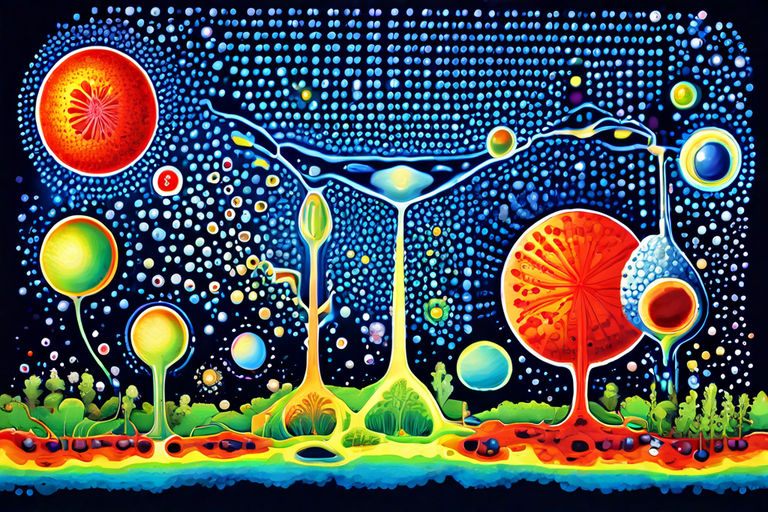Introduction
In the realm of biology, understanding genetic variation is paramount to comprehending the intricacies of life. At the heart of this understanding lies the concept of heterozygosity, a fundamental principle that governs genetic diversity within populations. In this article, we embark on a journey to unravel the significance and implications of heterozygous definition biology.
The Significance of Heterozygosity
Heterozygosity, also known as genetic variation, describes the situation where an organism contains two distinct alleles for a particular gene. This genetic variation is like the spice of life in the biological world, fueling the engine of adaptation and evolution for different species.
Think of genes as recipes in a cookbook, and alleles as different ingredients that can be used to make a dish. When an organism inherits two different alleles for a gene, it’s like having multiple recipe options to choose from. This diversity in genetic makeup allows organisms to adapt to changing environments and the challenges they face in life.
Think about a population of birds living in a forest. Some birds may have alleles that make them better at finding food on trees, while others may have alleles that make them better at finding food on the ground. When faced with a change in their habitat, such as the introduction of a new predator or a change in climate patterns, the population has a greater variety of alleles, increasing the likelihood that at least some individuals will have the traits needed to survive and thrive.

Furthermore, genetic diversity is not just a matter of survival; It is also about prosperity and prosperity in different conditions. Just as a diverse team with different skills can effectively tackle different tasks, a population with high heterogeneity can navigate a wide range of environmental niches and challenges.
In short, heterozygosity is nature’s way of hedging its bets against the uncertainties. By ensuring that organisms carry a mix of genetic traits, it provides the raw material for evolution to work its magic, sculpting populations over time and forming the rich tapestry of life on Earth.
The Basics of Heterozygous Genetics
When a person is heterozygous for a particular gene, it means they have inherited two different versions, or alleles, of that gene – one from each parent. In some cases, one of these alleles may be dominant, meaning that the trait is expressed, while the other allele, called recessive, is hidden. This genetic variation is the basis of a wide range of physical characteristics, or phenotypic characteristics, that we see in populations. Think of it like having a varied wardrobe: You may have one dominant outfit that you wear often, but you also have other options that come in handy depending on the occasion. Likewise, heterozygous individuals have a mix of genetic traits that can manifest in different ways, contributing to the overall diversity and richness of life.
Understanding Alleles and Allelic Frequencies
Alleles are alternative forms of a gene, each contributing to the genetic makeup of an individual. Allelic frequencies refer to the relative abundance of specific alleles within a population, providing insights into genetic diversity and evolutionary dynamics.
The Role of Heterozygosity in Evolution
Heterozygosity plays an important role in natural selection, which is the driving force behind evolution. This allows the retention and propagation of advantageous traits within a population while enabling organisms to adapt to changing environmental conditions. This genetic diversity acts as a safety net, helping species to withstand fluctuations in their environment and ensuring their continued existence over generations. Think of it as a diverse toolkit: the more tools you have on hand, the better equipped you are to tackle different challenges. Similarly, heterozygosity provides species with a wide range of genetic options, increasing their resilience and ability to thrive in diverse habitats and conditions.
Exploring the Genetic Landscape
Exploration of heterologous biology is not limited to single genes; It spans the entire genome. Examining genome-wide heterozygosity provides valuable insights into the structure of populations, their demographic past, and evolutionary linkages between different species. It’s like zooming out from a single puzzle to see the whole picture. By studying diversity throughout the genome, scientists can uncover patterns that shed light on the history and relationships of different populations and species, offering a deeper understanding of the complex web of life on our planet.
Heterozygosity and Species Resilience
Species that boast high levels of heterozygosity have a valuable advantage in coping with environmental challenges and disease outbreaks. This genetic diversity acts as a shield, fortifying the population against the effects of environmental stress and disease outbreaks. This is similar to having a diverse team with different skills—when faced with adversity, this diversity enables the population to adapt more effectively and overcome obstacles. Ultimately, the presence of genetic variability conferred by heterozygosity strengthens population resilience, reducing the likelihood of extinction even in the face of rapidly changing environmental conditions.

Unraveling the Mysteries of Hybrid Vigor
Hybrid vigor, also known as heterosis, is an interesting phenomenon observed in the offspring of hybrid crosses, where they exhibit traits that surpass their purebred parents. Heterozygosity, or genetic diversity, lies at the heart of this phenomenon, playing an important role in increasing the performance and adaptability of hybrids across different environments. It’s like combining the best qualities of two different recipes to create a new dish that exceeds the sum of its parts. By inheriting a variety of genetic traits from both parental species, hybrid offspring are better equipped to thrive in different ecological niches, making them valuable resources in agriculture, conservation and other fields where adaptability and resilience are paramount.
Navigating the Complexities of Inbreeding Depression
Inbreeding depression occurs when closely related individuals mate, resulting in reduced overall population fitness and reproductive success. This phenomenon can lead to various health problems and reduced performance in children. However, heterozygosity, or genetic diversity, acts as a safeguard against the negative consequences of inbreeding. By introducing a mixture of genetic traits into a population, heterozygosity helps mitigate the adverse effects of inbreeding depression, maintain overall genetic diversity, and promote population health. This is similar to having a diverse gene pool that acts as a buffer against the deleterious effects of genetic similarity, ensuring the long-term viability and resilience of populations. Inbreeding depression occurs when closely related individuals mate, resulting in reduced overall fitness and reproductive success of the population. This phenomenon can lead to various health problems and reduced performance in children. However, heterozygosity, or genetic diversity, acts as a safeguard against the negative consequences of inbreeding. By introducing a mixture of genetic traits into a population, heterozygosity helps mitigate the adverse effects of inbreeding depression, maintain overall genetic diversity, and promote population health. This is similar to having a diverse gene pool that acts as a buffer against the deleterious effects of genetic similarity, ensuring the population’s long-term viability and resilience.
Harnessing Heterozygosity for Conservation
Conservation initiatives often prioritize the protection of genetic diversity in endangered populations. Through targeted breeding programs and habitat restoration efforts, conservationists aim to increase heterozygosity—the presence of different genetic traits—in these vulnerable species. By doing so, they enhance species’ ability to adapt to changing environments and combat threats such as habitat loss and fragmentation, climate change, and disease outbreaks. Think of it as nurturing a diverse ecosystem within a population, similar to tending a garden with a variety of plant species. By promoting diversity, conservationists not only protect the genetic integrity of endangered species but also ensure their long-term survival and resilience in the face of ongoing environmental challenges.

Leveraging Heterozygosity in Agriculture
In the agricultural context, heterozygosity is helpful in improving crop quality and optimizing livestock breeding programs. Through targeted breeding practices that prioritize heterozygous individuals, farmers can increase crop yields, enhance disease resistance, and improve overall productivity within farming systems. It is like bringing together a team of different talents to tackle different tasks on a farm. By exploiting the genetic diversity inherent in heterozygosity, farmers can breed crops and livestock that are better equipped to thrive in diverse environmental conditions and to cope with challenges such as pests, diseases, and adverse weather events. Finally, promoting diversity in agricultural settings is essential to ensure sustainable food production and increase the resilience of agricultural systems to meet the evolving agricultural landscape and global food security challenges.
Addressing Common Misconceptions
Despite its importance, heterozygosity is often misunderstood or overlooked in scientific discourse. Contrary to popular belief, heterozygous individuals are not always superior to homozygous counterparts, and the effects of heterozygosity can vary depending on environmental factors.
FAQs
What is the significance of heterozygosity in biology?
Heterozygosity plays a crucial role in genetic diversity, adaptation, and species resilience by maintaining allelic variability within populations.
How does heterozygosity contribute to species survival?
Heterozygosity enhances species resilience by reducing the risk of extinction through increased genetic variability and adaptability to changing environments.
What are the implications of inbreeding depression?
Inbreeding depression results from mating between closely related individuals, leading to decreased fitness and reproductive success within populations.
How can heterozygosity be leveraged for conservation purposes?
Conservation efforts often focus on preserving genetic diversity within endangered populations by promoting heterozygosity through targeted breeding and habitat restoration.
What is hybrid vigor, and how does it relate to heterozygosity?
Hybrid vigor, or heterosis, refers to the enhanced traits observed in hybrid offspring compared to their purebred counterparts, highlighting the role of heterozygosity in promoting genetic diversity and adaptability.
How does heterozygosity impact agricultural practices?
Heterozygosity is essential in agriculture for crop improvement and livestock breeding programs, allowing farmers to enhance yield, disease resistance, and overall productivity.
In conclusion, heterozygous definition biology serves as the cornerstone of genetic diversity, adaptation, and species resilience. By embracing the complexity and significance of heterozygosity, we gain invaluable insights into the mechanisms driving evolution and ecological dynamics.



